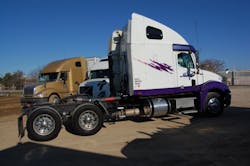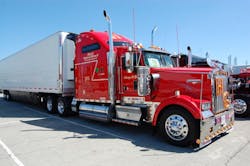Yet a new survey conducted by Intuit Inc. and Emergent Research among 4,622 workers at 11 “on-demand” companies is shedding some new light on how such demand-driven labor might create broader economic effects – specifically where the often-controversial topic of “worker classification” is concerned.
This new study – entitled Dispatches from the New Economy: The On-Demand Workforce and which will be officially released in early 2016 –found that the typical on-demand worker is a part-timer, working 12 hours a week via his or her primary platform and collecting 22% of their household income from work obtained through online marketplaces or applications that connect providers to customers.
Companies participating in the study include Uber, Upwork (formerlyElance-oDesk), Wonolo, MBO Partners, OnForce, Work Market, Visually, HourlyNerd and Fiverr, Deliv and Field Nation, with the research analyzing the demographics, motivations and challenges of workers pursuing on-demand jobs.“The on-demand economy is accelerating a shift to self-employment that is having a transformative effect on our economy and the future of work,” noted Alex Chriss, VP & GM and self-employed solutions at Intuit. “There is the potential to fuel this new wave of innovation and support an expanding entrepreneurial population but it will require a new mindset and most importantly, a deep and objective understanding of the aspirations, motivations and pain points of those choosing to work for themselves and on-demand.”
As independent truckers might say, “tell me something I don’t know.”
Still, there are findings within the impending study that small fleets and owner-operators might find useful, including:.
On-demand work is primarily part-time:
- The average person working in the on-demand economy spends 12 hours per week working via their primary partner company.
- Some 43% have either a traditional full time job (29%) or part-time job (14%) (receive W2s).
- Only 5% said a single on-demand platform provided their sole source of income.
The on-demand economy provides important opportunities for income augmentation:
- The primary reason people choose to be independent contractors in the on-demand economy is to earn more money (72%).
- A secondary motivation is flexibility (60 percent).
Most on-demand economy workers (70%) are satisfied with their work
- Some 54% identified as highly satisfied, 16% as satisfied, and 22% as dissatisfied.
Most plan to continue working via their on-demand economy partner in the year ahead:
- About 81% percent of workers said they expect to continue working with their on-demand economy partner over the next year.
- About 47% say they will definitely continue and 34% say they will probably continue, while 3% will not continue.
Earlier Intuit research from 2015 showed that an estimated 7.6 million Americans will be regularly working as providers in the on-demand economy by 2020, more than doubling the current total of 3.2 million.
On top of that, the rise of the on-demand economy is seen to be a part of a broader long-term growth trend in the contingent workforce, which has grown from 17% of the U.S. workforce 25 years ago, to 36% today, and is expected to reach 43% by 2020.
Does that mean working as an independent contractor will be viewed as a more “legitimate” than in the past? And will that make legal challenges based on “worker classification” tougher or easier?
Those are just some of the tricky questions posed by this more widespread rise of “on-demand” labor. We’ll see how this trend affects trucking – if at all – in the near future.
About the Author
Sean Kilcarr
Editor in Chief
Sean Kilcarr is a former longtime FleetOwner senior editor who wrote for the publication from 2000 to 2018. He served as editor-in-chief from 2017 to 2018.


